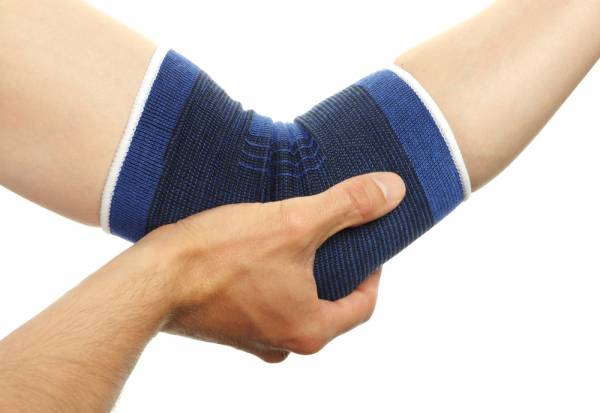Snap! Pop! That is a common sound heard and felt within the elbow of a professional baseball pitcher. The cause is a torn ulnar collateral ligament. This elbow injury is commonly reported throughout the year during the baseball season. What goes less noticed, however, are the day-to-day aches and pains that both professional and amateur athletes go through – sprains, strains, tendonitis and bursitis. All of these can affect our performance in sport, work, and daily living.
UCL Injury
The damaged ulnar collateral ligament (UCL) can be a setback for any individual. With varying degrees of injury to the ligament, an individual may be out for a few days to over a year if there is a complete rupture to the UCL. The most minor of these sprains means a person could return relatively quickly to activity, usually within a few days. I remember when I sprained my UCL. I was out for about a week, and then was taping my elbow with the help of my co-workers so I could return to Jiu-Jitsu.
Bursitis
If you have ever hit your elbow hard enough, especially on the edge, then you may have noticed major swelling, also known as bursitis. This can be rather painful and may need a physician. Usually you can take care of this yourself by icing and compressing the area. However, in more extreme cases, the physician may need to drain it. If that is done, and you return to activity, you may consider using an elbow pad for the first week or so.

Tennis Elbow
Another irritating elbow issue is best known as “tennis elbow.” In the medical arena it is known as lateral epicondylitis. This can happen to anyone from the grappler to the powerlifter and results from overuse of the extensor muscles in the forearm. The onset of pain is gradual and as it worsens the person is unable to perform his/her activity at the highest level. If caught early enough, it is best treated with rest, ice, compression, and elevation (RICE). For those who may wait a bit longer, the use of other therapeutic aides may be necessary. These aides can range from anti-inflammatory/pain medications to a brace. This is all dependent upon what instructions you are given from a medical professional.
Muscle Strains
Muscle strains can occur anywhere, lower leg to back to shoulder to anywhere there are muscles in the body. Around the elbow, the biceps, triceps, forearm flexors, and extensors are the most commonly injured. The worst of these can be a torn biceps. When this happens the muscle “balls” up in the upper arm. From here there are two options: let it heal as it is or have surgery to have it reattached. In most cases, surgery is the best option. This choice all depends on age, activity level, the individual involved, and the physician. A less severe biceps injury means you have strained the muscle without a complete tear. These can be slow healing because of the amount the arm is used and the fact this muscle serves two purposes: elbow flexion and assisting with shoulder flexion. The best and worst case scenario is a few days to a few months for recovery. It all depends on healing and how well it is taken care of.
Rehabilitating the Elbow
Taking care of and rehabilitating the elbow is a rather different process. Most of the time, it’s all about strengthening the injured muscle. Well, being a joint, it needs strengthening both above and below the joint. For the sprained elbow, once inflammation is down and range of motion has been restored, strengthening can proceed. The best thing to do is strengthen the forearm by doing gripping exercises, such as scrunching up a towel, squeezing putty, or performing flexion and extension exercises using a dumbbell. For the upper arm, any form of biceps curls or triceps extensions will help to strengthen this area. Remember, if there is pain, back off and consult a health professional as needed. None of these exercises should cause pain; well, outside of the normal muscle soreness.
The elbow, although a fairly stable looking joint, can be susceptible to many injuries. They can range from relatively minor to something major that requires surgery. As an athlete, it is good for you to have a basic idea of injuries and how to handle them.
Recovering From Elbow Injury
- Always begin with RICE.
- Move to range of motion exercises, regaining flexion and extension as needed.
- Incorporate exercises that will help build strength and stability to the joint.
If ever in doubt about the injury, check with your physician. Activity should last a lifetime. Better to take care of something early than wait until it becomes a problem. Injuries are a part of life; how the injury is handled, determines how well a successful recovery will occur.
You might also like:






